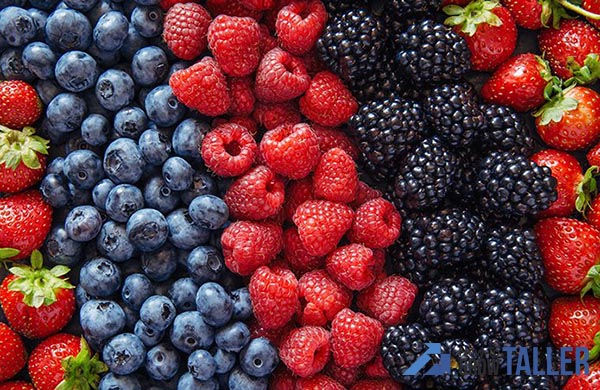During our growing years, nutrition is a critical factor that can significantly affect our physical growth and body development. There is certain food to increase height that is present in the major food groups – grains, fruits, vegetables, dairy, and protein food. Hence, it is best for children to be provided with adequate nutrients from a proper diet to strengthen their bones and joints, to stimulate growth hormone and to promote a healthy body, in turn boosting their height.
Here is the list of food increase height that should be included in a daily diet to trigger the maximum growth potential of our children. Let’s check them out:
Chicken

Topping the food to increase height is chicken, one of the primary animal foods that can help you grow taller and build up your body mass, tissues and muscles. Chicken can provide you with loads of proteins and other imperative nutrients that are essential to increase and maintain your height, among which is vitamin B-complex (mainly thiamin, vitamin B6 and pantothenic acid). It is also packed with taurine, an amino acid that influences bone formation and bone growth.
Eggs
Egg is easily available food to increase height. An egg provides around 6 grams of protein and contains many essential amino acids to benefit your body (1). Aside from being protein-rich, egg is an incredible source of vitamins and minerals such as vitamin D, riboflavin, biotin, phosphorus and iron. All of which allows eggs to strongly support cell development, skeletal growth as well as the overall development of children. Make sure to include eggs to your child’s daily meal and be creative with all the cooking assortments: boiled egg, omelet, sunny-side up, fry, or scramble. Also, it is delicious to add egg as an addition to dishes like soup, porridge, rice, noodles or desserts.
Fish

Fish is one healthy food to increase height that should be added in any proper diet. Fatty fish (such as salmon and tuna, etc.) is loaded with omega-3 fats that are beneficial for bone growth, muscle buildup, brain development and heart health. It can be either fried or cooked into an exotic dish, then you can get a proper proportion of this tasty food to promote your height growth properly.
Beans
Beans are excellent sources of proteins and low in fat content that can be served as a nutrient packed diet. Additionally, beans are rich in other essential nutrients that are required for a growing child such as calcium, iron and B vitamins, etc. All of which assists in tissue growth, cell development and growth hormone stimulation, thereby increasing height and enhancing body growth. Whether they’re boiled, baked or cooked, beans are delicious and healthy.
Milk
No doubt that milk is the key food to increase height in every child’s daily diet. It contains loads of calcium, protein and other nutrients that are significant to boost your height. Calcium is the primary bone-building element that aids the growth and maintenance of strong bones, thereby surging up your height. Children should be served whole milk or products made of whole milk for more nutrients, unless they are advised otherwise due to health issues such as obesity. Getting a big glass of milk every day is a top tip for growing taller.
Tofu

Tofu is recommended as the perfect food increase height. Tofu is made from soya milk, and is not only healthy but also a great option for the vegans and lactose intolerant people. Its capability to boost your height is no inferior than any meat or egg because of its high calcium amount. Tofu is also rich in iron and contains all eight amino acids, thus it is an excellent choice for general health and height growth.
Carrots
It’s common knowledge that carrots are rich in beta-carotene – a nutrient which is converted into vitamin A by the body – and vitamin C. These vitamins are fundamental to help the body absorb and preserve calcium more effectively, in turn influencing bone resorption and keeping them healthy. Vitamin A is also responsible for good vision, the growth and repair of body tissues. There are many ways to add carrots to your diet, from adding raw carrots to salads to steaming carrot sticks, baking carrot cake or turning into carrot juice or popsicles.
Leafy greens
Green leafy vegetables are top sources of calcium, vitamin K and other essential nutrients. Bok choy is the topmost food to increase height. Spinach is rich in iron – 1 cup (180g) of spinach provides 6.43mg of iron (2). Additionally, spinach, kale and cabbage also bring vitamin C, calcium, magnesium and potassium. The calcium in leafy vegetables can balance bone resorption and deposition, in turn supporting bone growth. Additionally, vitamin K can enhance bone density, which is beneficial for bone health. There are many types of green leafy vegetables that can be added to your daily diet, including bok choy, kale, collard greens, turnip greens to make soups and stews, pasta and smoothies, etc.
Berries

The berry varieties (blueberries, strawberries, raspberries, etc.) are all filled with important nutrients. They are amazing sources of vitamin C, antioxidants and phytochemicals that help to protect healthy cells from damage, promote cell growth, repair tissues and boost the immune system. Berries are also needed for the synthesis of collagen, which accounts for the increase of bone density and bone health, thereby helping you grow taller. Berries are tasty fruits to consume, and we can use them for ice-cream, yogurt, pancakes toppings or mix with cereals.
Grains
Grains, and whole grains in particular, are absolutely powerful to help you grow taller. They are the main sources of energy for your body. Their consumption should be increased because they provide the required calories, especially during puberty when your children are growing rapidly. Whole grains are abundant in vitamins and minerals such as vitamin B, magnesium and zinc, all of which are essential for bone growth and mineralization to increase height. There are many great options for a proper diet such as brown rice, whole-grain bread and pasta.
All the healthy foods mentioned can aid the journey of growing taller for your children. Children grow at their own pace, each of them will have different rates of height growth due to genetics and other environmental factors. However, the lack of nutrition could hinder their growth and prevent them from reaching predetermined height. Therefore, nourishing your children nutritious food to increase height, especially during puberty, is vital to help them achieve their amplest height and beyond.
